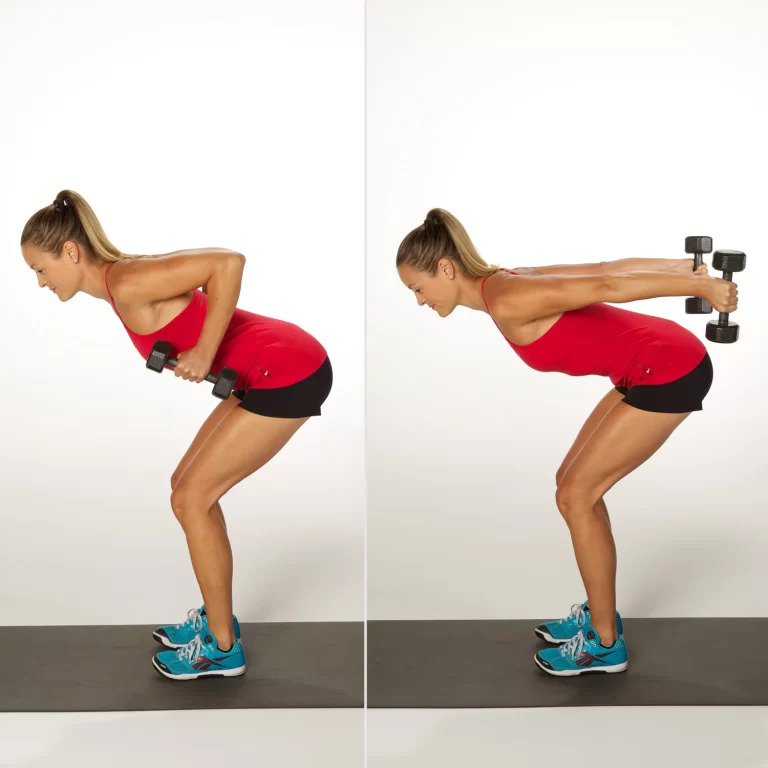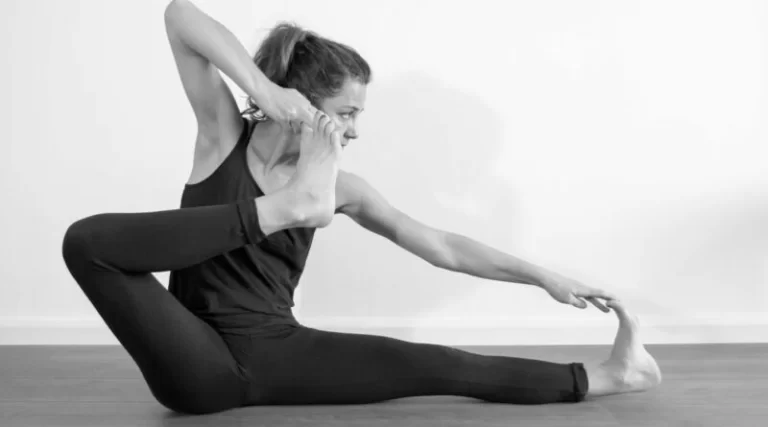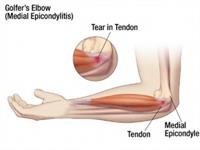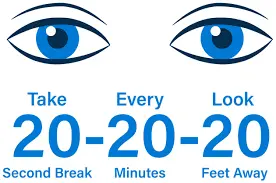14 Best Home Exercise for Wrist Drop
Exercise for wrist drop is an important part of your overall treatment program along with Medical and Physiotherapy Treatment.
Wrist drop, also known as radial nerve palsy, is a condition characterized by the inability to extend the wrist and fingers due to damage or compression of the radial nerve. Specific exercises to improve wrist drop typically involve a combination of stretching and strengthening movements to regain function and mobility in the affected wrist and hand.
Due to a radial nerve’s innervation of the extensor muscles of the wrist & digits, those whose radial nerve function has been compromised may not vigorously extend them. Therefore, when a patient attempts to bring an arm to the horizontal position, the arm, and hand hang unsteady in the flexion position. A wrist stays partially bent because of the opposing action of the flexor muscles of the forearm. Therefore, the extensor muscles in a posterior compartment remain paralyzed.
What is Wrist Drop?
The upper extremity’s hand and wrist have a significant amount of activity. So many daily activities depend on wrist function. The upper-limb, as well as wrist examination, was done in a structured format, which will allow to encourage the most suitable working diagnosis for therapy. The bilateral hand comparison could be helpful because it can be hard to diagnose hand and wrist abnormalities.
There are 3 variable degrees of nerve damage:
Neurapraxia: A 1st-degree injury, is the least serious classification.
Axonotmesis: This directs to a second-, third, or fourth-degree injury.
Neurotmesis: A last sense fifth-degree injury, which is the numerous severe form of nerve damage.
It is rare for radial nerve injury to happen on any site outside a humeral shaft or the proximal portion of the dorsomedial forearm. However, with more radial nerve palsy, a way of motor paralysis involves loss of wrist extension, thumb extension & abduction, as well as finger metacarpophalangeal joint extension. Higher radial nerve palsy typically doesn’t involve triceps function and elbow extension is preserved.
Proper flexor tendon tensioning needs wrist extension, which is strongly relaxed and serves as a functional deficiency following high radial nerve paralysis. More distal nerve damages involve a posterior interosseous nerve & result in low radial nerve palsy. Due to the retained extensor carpi radialis longus process, wrist extension is preserved with a radial deviation. However, the hand is startlingly awkward and clumsy in the absence of thumb extension, abduction, and finger metacarpophalangeal joint extension.
The radial nerve is one of the 3 nerves that travel down your arm, taking signs from your brain to your hand. The radial nerve allows your wrist to flex backward and regulates the movement of your tricep muscles.
Sleeping with your arm trapped under your body or being in another position that places tension on the radial nerve for an elongated period can induce it to get squeezed. Another common reason for the injury is the use of crutches since they can put a lot of stress on the nerve. Radial nerve constriction can also happen if you wear a tight bracelet or watch that restricts your wrist for an extended period.
You should consult your doctor if you suspect you might have wrist drop, to seek the proper diagnosis and treatment. A small analysis printed in the March 2014 case of the Journal of Korean Neurosurgical Society discovered that although the initial signs of this disease are serious and wrist drop’s recovery time may be several weeks, the disease generally has a good prognosis.
Causes:
There are numerous potential reasons for injuries to the radial nerve.
- fracturing the upper arm’s humerus bone
- positioning your upper arm uncomfortably while resting
- Pressure from bending your arm over the back of a chair
- Using crutches improperly
- Slipping on your arm
- wrist contractions that last for a long time
- The most frequent causes of radial nerve injuries are arm injuries, repetitive trauma to the arm, sports injuries, and occupational accidents. The radial nerve may be completely cut off depending on the degree of the injury. When the nerve is cut, it happens.
- Long-term nerve damage may occur through lead poisoning. Lead toxicity has the possibility to cause long-term harm to the body’s nervous system as a whole.
- One nerve may be impacted by specific health issues that have an effect on your entire body. Inflammation, fluid retention, and other symptoms which may indicate nerve compression can be pushed on by kidney disease and diabetes. The radial nerve and other nerves in your body might be affected by this.
Symptoms of wrist drop:
- A numbing sensation along the nerve’s route
- Weakness in the wrist, hand, or fingers
- Loss of action in the hand, fingers or wrist.
- The index and middle fingers, as well as the posterior hand, near your thumb, are typically affected by radial nerve injuries.
- Symptoms may have sharp or burning pain, as well as unique trends in your thumb and fingers. It is common to share numbness, tingling, and trouble straightening your arm. You can not spread or straighten your wrist and fingers. This is named “wrist drop” or “finger drop,” and it doesn’t happen in all cases.
- Radial nerve injury can cause pain, weakness, and loss of position in the wrist, hand, and fingers. A common time for this is radial nerve palsy.
Exercises for Treating Wrist Drop
Mobilizing exercises
Wrist flexion and extension
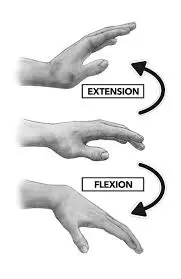
- Relax your forearm on the table with your hand over the edge of the table.
- Bend the wrist pointing the hand down towards the floor and then increase pointing towards the top.
- Use your additional hand to assist stretch your wrist so that your fingers are pointing up to the top and then down to the ground.
Ulnar and radial deviation (side to side)
- Hold your wrist and fingers straight. Keep your forearm still.
- Move your hand in the direction of your little finger and then in the direction of your thumb, with the action occurring at the wrist.
Strengthening exercise
Wrist flexion

- Relax your forearm on a table with the back of your hand facing down.
- Place the theraband in your hand. Gradually flex your wrist up as much as possible while resisting the motion with the additional hand.
Wrist extension
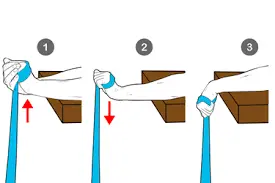
- Keep your elbow and forearm on a table and allow your wrist to drop over the edge.
- Place a band near your knuckles and grab onto the band under your hand.
- Extend your wrist as much as possible while resisting movement with the additional hand.
Weight transference
- Stand with both palms on a table.
- Gradually put your body weight on your wrists.
- Move your weight from side to side, slowly taking more weight and movement, as pain allows.
Wall push-up
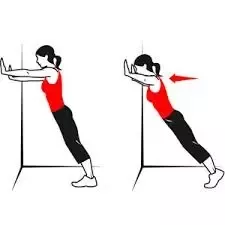
- Stand facing a wall and tilt against the wall with your arms and back straight.
- Gradually flex your elbows and hold your body weight forwards, as you lean through your wrists.
- Push up via your wrists until your elbows are straight.
Quadruped exercise
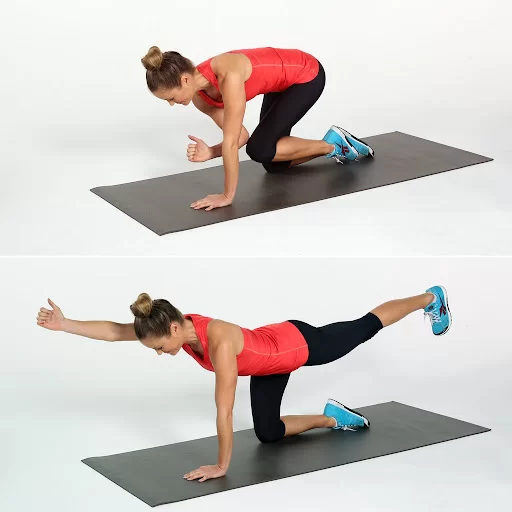
- On your hands and knees, gradually move your weight forwards, bending through your wrists.
- As you shift your weight from side to side, gradually put increasing pressure on the injured wrist.
- Improvement on to a kneeling press-up, as pain allows.
- Then raise your opposite hand and leg alternatively. complete 10 repetitions on each side.
Ball Squeeze

- Take a soft foam ball. Wrap all 5 of your fingers around the ball.
- constrict and then relax your hand. Repeat this at least 15 times.
Rubber Band Stretch
- Take a rubber band and place it around all 5 fingers on one hand.
- Utilizing the rubber band as resistance, extend your fingers as far as you can before relaxing them once more. do 3 sets of 20 repetitions on both hands.
- Add more rubber bands to the exercise to increase the resistance as your wrist and fingers become stronger.
Hammer Rotation
- You will need a hammer, wrench, or equally long, thin tool for this activity.
- Make sure it is not too heavy, particularly if your wrists are tender or weak. Leaning forward in a chair, hold your best tool in one hand and place the other arm on your thigh.
- Your palm can be internal move then slowly turn your wrist downwards so your palm is facing the base.
- Turn it back to the start position then turn your palm upwards so it’s facing the top.
- Repeat as multiple times as you can on both arms.
Stretching exercise
Wrist Extension Stretch
- Keep your affected arm straight out in front of you, but avoid closing your elbow.
- When you flex your wrist back, your fingers should be pointing up towards the sky as if you were telling someone to “stop.”
- When you feel a stretch on the inside of your forearm, use your free hand to draw the fingers of your damaged hand back towards you.
- Hold here for fifteen seconds.
- Repeat 5 times.
- Do this exercise 4 times a day.

Wrist Flexion Stretch
- Keep your injured arm straight out in front of you, but avoid locking your elbow.
- Your fingers should be pointing down towards the floor when you bend your wrist forward.
- Until you feel a stretch on the outside of your forearm, use your other hand to draw the fingers of your wounded hand back towards you.
- Hold here for 15 seconds.
- Repeat five times.
- Do this exercise 6 times a day.
Wrist Supination
- Flex the elbow of your affected hand and keep it close to your body, near your ribs.
- Turn your palm upward and towards the roof.
- Until you feel the stretch, use your other hand to rotate your forearm into the palm-up position.
- Hold here for fifteen seconds.
- Repeat 5 times.
- Do this exercise 4 times a day.
Radial Nerve Glide
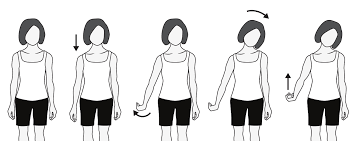
- Take a standing position and, keep your arms by your sides.
- Lower the shoulder of your affected arm and stretch your fingers downward.
- Turn your arm inside so that your thumb faces your body.
- Flex your wrist while keeping your palm up towards the ceiling.
- Lean your head away from the arm you are stretching.
- Lift your arm up and away from your body while keeping your wrist flexed and your head turned away.
- For three to five seconds, maintain each of these positions.
- Repeat 5 to 10 times.
- Complete this exercise two to 4 times a day.
Tips for Treatment & Recovery:
- The Water Spout: Maintain a straight arm out in front of you, parallel to the ground. Then, while holding an empty cup in your outstretched hand, flip it over so that water is gushing out of it.
- Figure Eight: Stand leaning forward with your natural hand on a worktop/back of a chair for support. Hang your involved arm in a figure-eight movement. Face your palm outward when your hand is closest to your torso. When your hand is most distant from your body, face your palm inward.
- Hide and Seek: Maintain your elbow out away from your side. Keep your arm at a ninety-degree angle with your palm facing up. While maintaining your elbow still, turn your forearm behind it. Once more with your palm facing the ceiling, position it behind your elbow. Rotate your head to look at your fingers.
- Don’t Forget to Tip: Examine the involved side. As if receiving a backhanded tip, place your hand behind your back. You can crisscross your fingers.
- The Water Pump: Keep hands in a bending position. Pump your hands in an up-and-down motion.
- Table Stretch: Keep the back of your hand flat on the table and turn your entire body away.
- Self-Massage: Massage the back of your hand in a circular movement. Depending on the side involved, the right hand should circle counter-clockwise, with the left hand circling clockwise.
FAQ
Which muscles are involved in wrist drop?
Radial nerve palsy is a condition that results in wrist drops. The wrist and digit extensor muscles are innervated by the radial nerve, hence those whose radial nerve function has been damaged cannot actively extend them.
Which nerve is damaged in wrist drop?
When the radial nerve, which runs down the arm and controls the contraction of the triceps muscle at the back of the upper arm, is injured, a wrist drop occurs.
How extended does it carry to recover from wrist drop?
Wrist drops generated by radial nerve palsy can be healed in most cases. About 75% of radial nerve palsy cases are fixed with conservative treatment. Counting on the amount of injury to the radial nerve, it can take weeks to months for a nerve to recover after treatment.
Can the thumb is involved in wrist drop?
Extensor carpi radialis longus (ECRL) weakening causes the wrist drop, whereas posterior interosseus nerve (PIN) fascicular involvement causes the finger and thumb drop. It is also possible to experience sensory problems across the superficial radial sensory along the radial side of the forearm and thumb.
What is the therapy for wrist drop?
The wrist is splinted as the first step in treatment, which also includes osteopathic medicine, physical therapy, and occupational therapy. In some cases, surgical reduction of bone spurs or other anatomical flaws that may be encroaching on the nerve might be earned.


